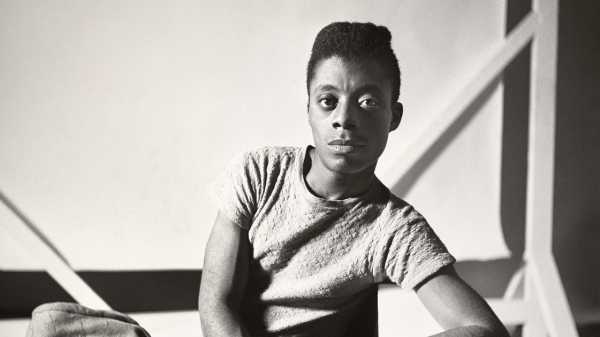
This past year, readers found their way to The New Yorker’s archive in droves, discovering classic pieces that remain as compelling and relevant today as when they first appeared. The most-read archive piece of the year was an exposé of the Manhattan culinary world, from 1999, by Anthony Bourdain, the influential chef who passed away this summer. (The essay later formed the basis of his best-selling book “Kitchen Confidential.”) Kathryn Schulz’s disquieting account of the future earthquake that may hit the Pacific Northwest came in at No. 2, and James B. Stewart’s tale of the 9/11 hero Rick Rescorla and the family that he left behind rounded out the top three.
“Hiroshima,” John Hersey’s groundbreaking 1946 report on the devastating effects of the atomic bomb, is the oldest piece on this list. It joins Shirley Jackson’s short story “The Lottery,” which was first published in The New Yorker seventy years ago, in 1948. Mavis Gallant’s true-crime report about a tragic student-teacher love affair, which ran in 1971, also found new readers this year.
In November, we published a special archival issue that featured, among other pieces, an excerpt of James Baldwin’s influential essay on civil rights, “Letter from a Region in My Mind”; his piece, from 1962, with its reflections on racism and religion, continues to resonate. Another standout was Mark Singer’s Profile of the magician and sleight-of-hand artist Ricky Jay, who died in November; the piece captures Jay’s idiosyncrasy—although he was talented enough to headline in Las Vegas, he hewed to the world of “ancient mountebanks” and “eccentric entertainers.” Joan Didion’s 1993 report on a California town that fell under the sway of the Spur Posse, a teen-age gang, was also quite popular. And David Grann remains an archive M.V.P., contributing no fewer than three of the pieces on this list—including his first piece for the magazine, “The Old Man and the Gun,” about an elderly bank robber, which has recently been adapted into a feature film, starring Robert Redford.
We hope that you enjoy this look through our archive. If you’d like to read more, please consider subscribing to our weekly archive newsletter, which brings a carefully curated selection of archive classics to your in-box every Sunday.
1. “Don’t Eat Before Reading This,” by Anthony Bourdain
A New York chef spills some trade secrets.
2. “The Really Big One,” by Kathryn Schulz
An earthquake will destroy a sizable portion of the coastal Northwest. The question is when.
3. “The Real Heroes Are Dead,” by James B. Stewart
A 9/11 hero and the loved ones he left behind.
4. “Thresholds of Violence,” by Malcolm Gladwell
An increasingly ritualized form of violence is attracting unexpected perpetrators.
5. “Secrets of the Magus,” by Mark Singer
The magician Ricky Jay’s deft illusions flout reality.
6. “Letting Go,” by Atul Gawande
What should medicine do when it can’t save your life?
7. “A Loaded Gun,” by Patrick Radden Keefe
Amy Bishop was a neurobiologist at the University of Alabama in Huntsville. How did she become one of the most notorious mass shooters in American history?
8. “Hiroshima,” by John Hersey
A groundbreaking report on how six survivors experienced the atomic bomb and its aftermath.
9. “Inheritance,” by Ian Parker
Writing saved Edward St. Aubyn’s life. Years of psychoanalysis, and the controlled fiction that followed, deferred the threat of suicide.
10. “God Knows Where I Am,” by Rachel Aviv
What should happen when patients reject their diagnosis?
11. “Blood Ties,” by Nathan Heller
Decades ago, two young lovers were convicted of a brutal slaying. Years later, why has the case become a cause?
12. “Letter from a Region in My Mind,” by James Baldwin
Reflections on the state of civil rights in America.
13. “Unfollow,” by Adrian Chen
How a prized daughter of the Westboro Baptist Church came to question its beliefs.
14. “Difficult Women,” by Emily Nussbaum
“The Sopranos” may have sparked the bad-boy revolution of cable TV, but Carrie Bradshaw was the first female antihero.
15. “Now We Are Five,” by David Sedaris
A big family, at the beach.
16. “Trial by Fire,” by David Grann
Cameron Todd Willingham insisted upon his innocence in the deaths of his children and refused to plead guilty in return for a life sentence. Did Texas execute an innocent man?
17. “The Lottery,” by Shirley Jackson
Fiction: The residents of a small American town gather in the square for an annual summer ritual.
18. “Immortal Gatito,” by Mavis Gallant
A love affair that scandalized France.
19. “Trouble in Lakewood,” by Joan Didion
How a once idyllic postwar town fell under the sway of a teen-age gang.
20. “The Cheater’s Guide to Love,” by Junot Díaz
Fiction: Confessions of a self-professed Casanova.
21. “What’s Wrong with Me?,” by Megan O’Rourke
Living with the pain of an autoimmune disease.
22. “A Cold Case,” by Philip Gourevitch
Suddenly, a New York cop remembered a long-ago double murder.
23. “The Old Man and the Gun,” by David Grann
Forrest Tucker had a long career robbing banks, and he wasn’t willing to retire.
24. “True Crime,” by David Grann
How an obscure, violent novel held clues to an unsolved slaying.
25. “The Manic Mountain,” by Nick Paumgarten
What caused a violent conflict between Sherpas and Western climbers on Mt. Everest?
Sourse: newyorker.com






